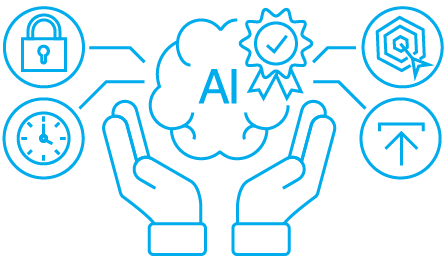- Key points:
- What is raw data?
- What is the raw data role in AdTech?
- How does raw data work?
- How can raw data be used in AdTech?
- How does a raw data process work?
- What is the value of raw data and why is it important?
- Wrapping up
Key points:
- Raw data, also known as source data, is the unprocessed collection of information gathered directly from its source.
- Raw data fuels marketers’ decisions that can easily build user segments, create personalized online campaigns and reach target audience.
- Raw data analysis helps AdTech companies gain valuable insights into audience preferences, interests, and purchasing behavior.
- Raw data in the AdTech space can be utilized for several purposes: Audience segmentation, Real-time Bidding, Ad Performance Analysis, Ad Fraud Detection, Attribution Modeling.
- Raw data is crucial as it provides the raw materials for researchers, analysts, data scientists, marketers and advertisers, to uncover patterns, extract insights, and make informed decisions.
- The amount of data continues to increase, and so will the importance of data.
In the world of AdTech, raw data plays a crucial role in driving effective advertising strategies and optimizing campaign performance to help companies achieve better conversion rates and precisely target audiences that are interested in the subject of the campaign.
In this article we are going to uncover the term of raw data and how it works, and why advertisers, marketers and data companies should pay attention to raw data to achieve their business goals.
What is raw data?
Raw data refers to unprocessed and unorganized information that is collected directly from various sources, such as user interactions, website visits, and other digital touchpoints.
Unlike processed data, which has been organized and analyzed for specific purposes, raw data in its purest form can be used as a valuable source for enriching data sets that lack essential information concerning user behavior.
What is the raw data role in AdTech?
In the AdTech (Advertising Technology) space, raw data plays a crucial role in driving targeted advertising campaigns and optimizing marketing efforts.
Data companies collect large volumes of data from various sources, such as user behavior, demographic information, and browsing history. This raw data serves as the foundation for developing sophisticated targeting algorithms and personalized ad experiences.
Raw data analysis helps AdTech companies gain valuable insights into audience preferences, interests, and purchasing behavior. These insights enable advertisers to deliver more relevant and effective advertisements, increasing the chances of conversions and maximizing return on investment (ROI).
How does raw data work?
Raw data works as a fuel for analytical systems and helps to generate insights and discoveries based on the information extracted, patterns, and data correlations.
Like the raw material that drives a machine, raw data provides the necessary building blocks for analysis, enabling researchers, scientists, and analysts to derive meaningful conclusions and make informed decisions.
In AdTech raw data fuels marketers’ decisions that can easily build user segments, create personalized online campaigns and reach target audience. Moreover, raw data delivers deep insight into user online behavior across different websites.
Raw data works as the foundation for analysis and processing, providing accurate and detailed information that can be transformed into valuable insights and actionable strategies for businesses.
How can raw data be used in AdTech?
Raw data in the AdTech space can be utilized for several purposes:
- Audience Segmentation – allows for dividing audiences based on their characteristics and behavior, advertisers can tailor their ad campaigns to specific target segments, improving engagement and conversion rates.
- Real-time Bidding – AdTech platforms use real-time bidding (RTB) systems that rely on raw data to determine the value of ad impressions in real-time auctions. This enables advertisers to bid and display ads to specific users who meet their targeting criteria.
- Ad Performance Analysis – raw data allows advertisers to measure the performance of their ad campaigns and make data-driven decisions. They can analyze click-through rates (CTR), conversion rates, and other metrics to optimize their advertising strategies and allocate budgets effectively.
- Ad Fraud Detection – raw data helps identify and mitigate ad fraud by monitoring suspicious patterns, such as invalid clicks or impressions generated by bots. AdTech companies can leverage data analytics techniques to detect fraudulent activities and protect advertisers’ investments.
- Attribution Modeling – raw data enables AdTech platforms to attribute conversions or actions to specific ads or marketing touchpoints. This assists advertisers in understanding the effectiveness of their advertising efforts and optimizing their marketing mix.
- Identity solutions – raw data can be used to create high-quality customer profiles where user actions and attributes can be connected across different devices and channels to produce a comprehensive overview of customer’s interactions.
To make the most of raw data in the AdTech space, businesses should invest in robust data management tools, analytics software, and skilled data analysts.
In addition, to ensure data privacy and security is crucial to maintain trust with users and comply with data protection regulations. By harnessing the power of raw data, AdTech companies can deliver more targeted and impactful advertising campaigns, driving better results for advertisers and enhancing the overall user experience.
How does a raw data process work?
Raw data undergoes several steps before it can be used and applied to a specific business area.

- Data Collection: Gather the raw data from various sources.
- Data Integration: Combine multiple datasets if necessary, ensuring that they are compatible.
- Data Cleaning: Remove any inconsistencies, errors, or outliers from the raw data. This may involve filtering, deduplication, and handling missing values.
- Data Transformation: Convert the raw data into a standard format that is suitable for further processing. This may include converting data types, normalizing values, or aggregating data.
- Data request: The customer specifies their requirements for the raw data they need, including the desired range, format, and specific data points they are interested in.
- Data Transfer: Once the request is received, the raw data is transferred from the to the customer in the CSV format.
- Data Supply or Data Enrichment: Data supply refers to providing the requested raw data as it is and treating it as the only source of data that is going to be further used. On the other hand, data enrichment means that the customer has some data already in their inventory and wants to enrich it by additional datasets to obtain a bigger picture to fully understand users’ behaviors and needs.
What is the value of raw data and why is it important?
Raw data refers to unprocessed and unstructured information collected directly from its source. It is the foundation upon which data analysis and decision-making processes are built.
Raw data is crucial as it provides the raw materials for researchers, analysts, data scientists, marketers and advertisers, to uncover patterns, extract insights, and make informed decisions.
It offers flexibility, accuracy, and adaptability, enabling organizations to gain a competitive edge in today’s fast-paced business environment.
By preserving raw data, organizations can future-proof their analysis and decision-making processes, ensuring they can adapt to changing circumstances and make data-driven decisions based on the most up-to-date information.
Wrapping up
As we continue to generate vast amounts of data, the importance of raw data will only grow. Raw data forms the foundation for data analysis, decision-making, and innovation. It offers unparalleled flexibility, accuracy, and adaptability, enabling organizations to gain valuable insights and stay ahead in today’s data-driven world.
Raw data is the fuel of data-powered decision making processes. By understanding its inner workings and importance, organizations can harness the power of raw data to drive innovation, improve efficiency, and gain a competitive edge in their respective industries.



